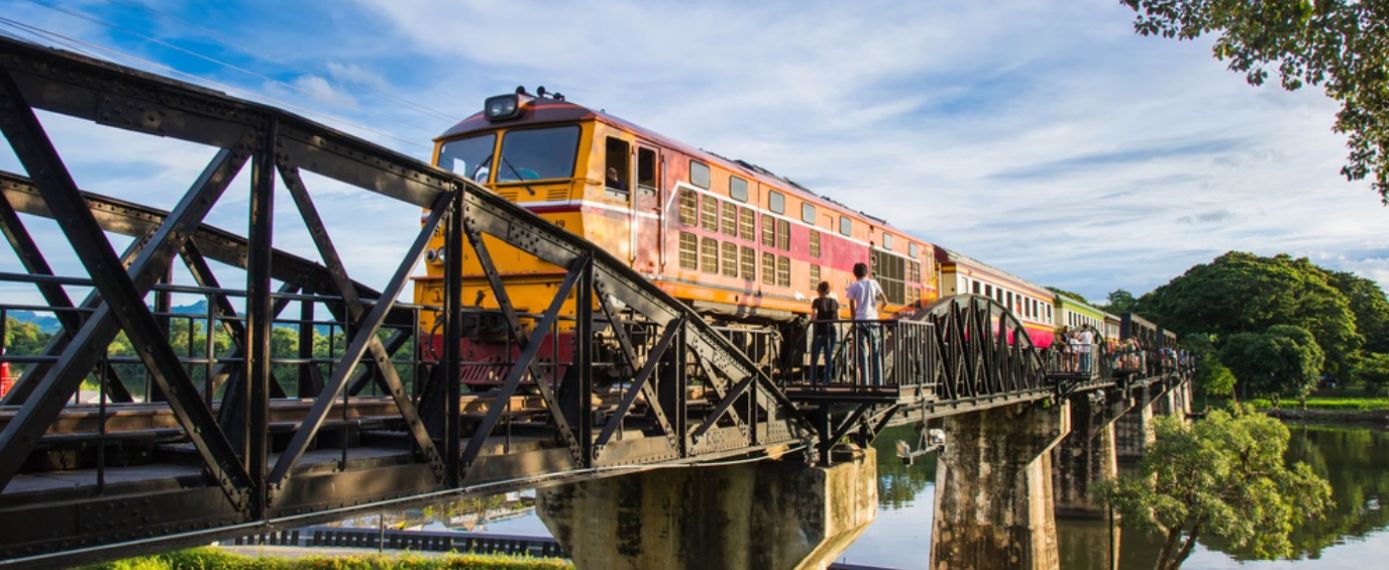
Join us on the ultimate 15-day adventure in Thailand and Malaysia with a thorough itinerary of tropical landscapes, vibrant cities, and cultural treasures. This itinerary provides a balance between cultural immersion and natural relaxation, where every moment is full of discovery, new experiences, and memories that last a lifetime. From the bustling Bangkok to the historical Kanchanaburi or from the rich heritage of Penang to the lush greenery of Cameron Highlands, a diversity of treats awaits you in this Thailand Malaysia Tour Package.
Join us on the ultimate 15-day adventure in Thailand and Malaysia with a thorough itinerary of tropical landscapes, vibrant cities, and cultural treasures. This itinerary provides a balance between cultural immersion and natural relaxation, where every moment is full of discovery, new experiences, and memories that last a lifetime. From the bustling Bangkok to the historical Kanchanaburi or from the rich heritage of Penang to the lush greenery of Cameron Highlands, a diversity of treats awaits you in this Thailand Malaysia Tour Package.
Our tour includes
Stay at
Hotel(14 nights)
Read more...Transfers
Travel by private & shared vehicle with driver according to daily schedule
Read more...Local Team
Private guides, drivers, your own travel expert
Read more...Meals
Daily scheduled meals including breakfast at hotel and lunch at local restaurant
Read more...Activities
20 Interesting Experiences
Read more...Services
In-tour offerings including entrance fees, boat trips, in-tour flights...
Read more...Stay at
Hotel(14 nights)
Read more...Transfers
Travel by private & shared vehicle with driver according to daily schedule
Read more...Local Team
Private guides, drivers, your own travel expert
Read more...Meals
Daily scheduled meals including breakfast at hotel and lunch at local restaurant
Read more...Activities
20 Interesting Experiences
Read more...Services
In-tour offerings including entrance fees, boat trips, in-tour flights...
Read more...Trip Overview
Thailand Malaysia Tour Package - 15 days

Bangkok
Kanchanaburi
Ayutthaya
Penang
Ipoh
Cameron Highlands
Kuala Lumpur
Melaka

With over 15 years of experience, our team will help you choose the perfect for your adventure.

Authentic

Flexible

Persionalized

24/7 Support


Destinations of this tour
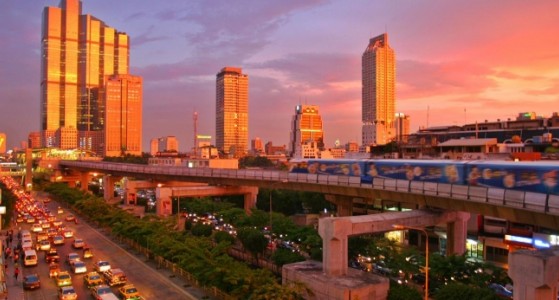
Buzzing, humid and energetic, Bangkok is the city where magnificent temples, historic markets, skyscrapers and rooftop bars create an intoxicating vibe that's hard to resist. The city is a mesmerizing blend of old and new, East and West, and dizzying contradictions. Historical sites next to vibrant nightlife areas, bustling markets near modern shopping malls, and street food vendors close to world-class restaurants. Hence, the city is still fascinating for its traditional culture. Saffron-robed monks weave among the morning rush hour to collect alms; communities dwell in stilt houses by the Chao Phraya River, eking out a living using centuries-old skills. A city tour in Bangkok often begins in Rattanakosin, drawn by the Grand Palace and Wat Pho. It's here the Chao Phraya River separates the city proper from its old capital Thonburi, a spot where quitet, narrow canals and floating markets illustrate why Bangkok was once called 'Venice of the East'. East of the canals is modern Bangkok, a hive of activity with countless businesses, markets and shopping malls handily connect by the BTS Skytrain. As a city that feels alive day and night, Bangkok is the destination for all, from foodies, shopaholics, culture seekers, history lovers, urban explorers, even party animals. That makes the well-known Southeast Asian gateway one of the world's most visited cities.
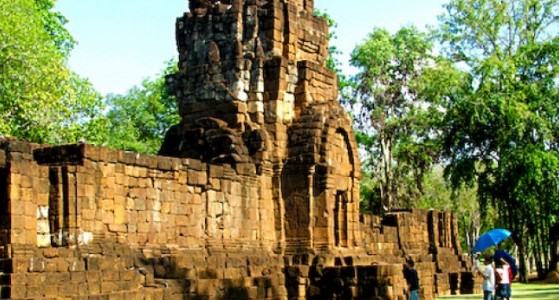
Kanchanaburi, located about 150 kilometers away from Bangkok, is a popular escape for those hoping to lose the crowd. This lush province and its pleasant capital is rich in rivers, waterfalls and outdoor adventure. It also occupies a tragic place in World War II history when Kanchanaburi region was the home of a Japanese prisoner-of-war camp. Popularized by the book and movie 'The Bridge on the River Kwai', the infamous bridge and railway is a notable part of the Kanchanaburi landscape. During World War II, Japanese forces used allied prisoners of war (POWs) and conscripted Asian laborers to build a rail route from Thailand to Burma (Myanmar). War cemeteries, museums and the chance to ride a section of the so-called 'Death Railway' draw numerous visitors to this quaint town. As a beautiful town with plethora of diverse attractions, Kanchanaburi is stacked full of great day-tripping opportunities. You can refresh yourself with a swim in one of the many sparkling pools at Erawan Falls; take a stroll down the city's heritage walking street for a look at the different Sino-Portuguese, Thai and Chinese building styles, or explore the famous temple caves built into the limestone hills surrounding Kanchanaburi.
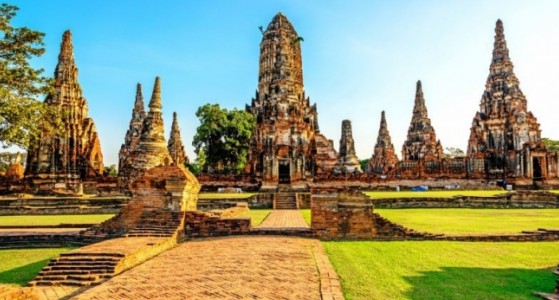
Ayutthaya, short for Phra Nakhon Si Ayutthaya, was once the capital of the ancient kingdom of Siam. It not only plays an important role in Thai's history but was also made a UNESCO World Heritage Site in 1991. Founded in 1350 and became the biggest city in the world by 1700, its wealth generated by trade with countries from all over Asia, the Middle East and Europe. However, it all came to an end in 1767 when war with Burma led to the devastation of the city. It was almost burnt to the ground and the capital of Siam moved to Bangkok. Nowaday, most of the ancient remains are on the western half of the island called the Ayutthaya Historical Park. There are temples, royal palaces, museums and more which are easy to explore on foot, by bike or tuk tuk. The most iconic sight of Ayutthaya resides in Wat Mahathat or the Temple of the Great Relic. Its signature is the tree root with a Buddha head embraced in it and no one knows exactly how it was made. Also worth a visit is the royal temple of Wat Phra Si Sanphet which was the original home of the Emerald Buddha, now located in the Grand Palace in Bangkok. Wat Phra Si Sanphet is the largest and one of the most famous temple in Ayutthaya which was once used for royal ceremonies and contained the ashes of royal family members. For an overview of Ayutthayan-style art, visit the Chao Sam Phraya National Museum, which holds well-preserved statues recovered from the ruins. There are beautiful bronze Buddhas dating from the 13th and 14th centuries, 17th- and 18th-century door panels with religious, traditional or floral carvings, and a hoard of 15th-century gold jewellery.
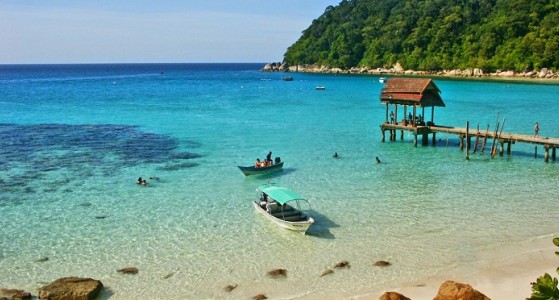
Penang is a state on the west coast of Peninsular Malaysia. Geographically, the state consists of Penang Island, and Seberang Perai, the mainland strip facing the island, which are separated by a small stretch of the Strait of Malacca. Penang is rich in culture and history, with a unique mix of Malay, Chinese, Indian and British influences. Visitors will find Penang brimming with charming historic buildings, ornate religious sites, sandy beaches, kampungs surrounded by rice paddies, vast unbeaten jungles, all topped with a splash of bustling city life. The unique way in which cultures have melded in Penang may be best represented in the food. Frequently voted among Asia’s top locations to eat street food, the blend of Malay, Chinese, Indian and European culinary traditions makes for an unforgettable banquet of taste sensations. Once was a British colonial holding, Penang has an abundance of classical Victorian architecture, particularly in the capital city, Georgetown. History buffs and architecture lovers in particular will appreciate the colonial-era Penang City Hall, Fort Cornwallis and the Penang State Museum. Part of Penang’s charm is that within minutes of admiring colonial architecture you can be wandering among the colorful statues of the Burmese Buddhist Temple or admiring the peaceful geometric patterns of the Kapitan Keling Mosque. Don’t miss the superb Pinang Peranakan Mansion, where the opulent lifestyle enjoyed by the wealthy Chinese Straits families has been recreated with antique furnishings from all over the world. If you enjoy getting back to nature, take a hike in the Penang National Park. Visit the nearby Penang Butterfly Farm for a colorful adventure the entire family will enjoy. And don’t miss the tropical spice garden, one of Malaysia’s premier eco-tourism attractions with more 100 herbs and spices growing wild.
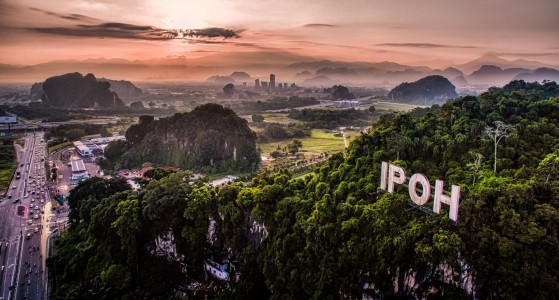
Ipoh is the capital of Perak and the third-largest city in Malaysia. Located between George Town and Kuala Lumpur, it is a popular destination for lovers of adventure, art, heritage, and architecture. Unlike other parts of the country, Ipoh is laid-back and simple – a bit of colonial, a bit of jungle, and a smattering of Southeast Asian food and culture. Split into two halfs by the River Kinta, the little town has the old town on the west side and the new town on the east. One can see the ancient temples and colonial architecture in the old part and modern shopping complexes in the new part. Explore all the historical sites in the old town with a walk along the heritage trail about four miles length and three to four hours to complete. The trail will take you past all the most famous colonial buildings in the city, beginning from Ipoh’s Railway Station, as well as a number of shop houses that date from the Second World War. Ipoh is surrounded by a vast, limestone cave system, some of which have been turned into temples by the local Buddhists. The three most important sites are Ling Sen Tong Cave Temple, Sam Poh Tong Temple, and Kek Lok Tong Cave Temple. Among them, Sam Poh Tong Temple with an array of Buddha statues is considered to be the biggest temple in Malaysia and attracts crowds year-round. Ipoh is one of the most concentrated Chinese places in Malaysia. Its most famous laneway, Concubine Lane, is full of red lanterns reminding the image of an ancient Chinese town. Along two sides of the road are restaurants, fashion outlets and souvenir shops in traditional Chinese and European architectural styles. Take a walk at Concubine Lane in ancient views and enjoy Chinese food are unforgettable experiences for each visitor. There is some delicious Chinese food that can’t be missed such as Hainan chicken rice, Chinese tofu, fish ball noodles...
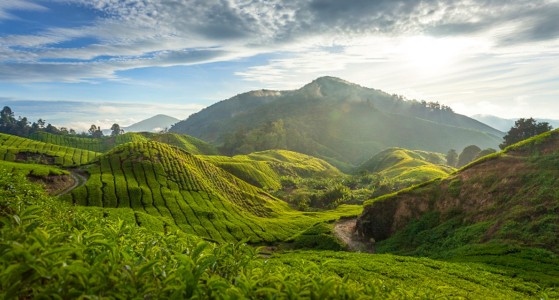
Cameron Highlands is a gorgeous hill station situated in Pahang, Peninsular Malaysia. The area is named after William Cameron, a British government surveyor who discovered the area in 1885 during a mapping expedition. During the colonial occupation era, Cameron Highlands gained fame due to its cool climate, attracting the British for a perfect summer retreat. Consequently, this hill station retains a quintessentially old English atmosphere with mock Tudor hotels serving tea in the afternoon and gin and tonics in the evenings. Cameron Highlands is well known for interesting hiking trails that are well kept, making things very easy experts and beginners alike. One of the most popular is the mystical Mossy Forest, the oldest forest in the area. It is known for the convoluted trees covered in moss that gives it an enchanted forest look. The paths have been mostly covered by wooden bridges making it quite an easy trek. For adventure lovers, there is a network of jungle trails taking in most of the major attractions and when combined with the roads will allow you to walk through most of the best areas from town to town. Most of the trails start, end, or can be combined with other trails to bring you to and from Tanah Rata. Cameron Highlands is also home to numerous agricultural farms where visitors can obtain fresher-than-fresh produce. One can visit a sweet-smelling strawberry plantation, a sprawling tea estate, or a prickly cactus farm for sightseeing.
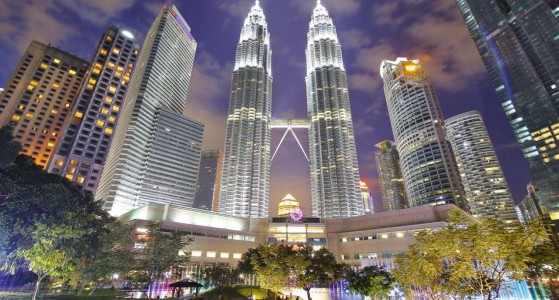
Kuala Lumpur is a diversity cultural melting pot, where jade-topped Chinese gates open out onto palm-lined squares, Indian restaurants serve banana leaf curries in marigold-scented alleyways, and old-fashioned Malay villages lie squeezed between the skyscrapers. Founded in 1857 under British rule as a tin mining outpost, Kuala Lumpur is fairly new as far as Malaysian cities go and does not have the rich history like Georgetown or Malacca. After a couple of decades of fluctuation, Kuala Lumpur began to prosper and was made capital of the Federated Malay States in 1896. Today, Kuala Lumpur is the capital of one of the economic powerhouses of Asia. Kuala Lumpurites come in all sorts. Malaysian and Chinese make up 80 percent of the population, and about 7 percent are Indians. Among the rest are offspring of intermarriages between races. Most Kuala Lumpurites speak at least two languages, one of which is Malay, or Bahasa Malaysia, the national language; some speak up to five – including Chinese and Indian dialects.

Melaka, or Malacca as it is previously known, is one of the most important port cities in the history of world trade. As a UNESCO World Heritage Site declared in 2008, Melaka showcases a fusion of Asian and European influences. It is also a perfect example of the perfect mix of different cultures and religions in Southeast Asia. Melaka’s history started as an independent sultanate. Later on, the Portuguese conquered it during its explorations in the 16th century. Some signs of Portuguese occupation still remain. After that, it became part of the Dutch empire. Most of the colonial buildings in the city came from that period. Situated in the Malacca Strait that connects the South Asian Sea and Europe to the East, the city was once the seat of the Malay Kingdom and has gone through several periods of prosperity as well as neglect. The city now offers a blend of cultural heritage, vibrant street art, and mouthwatering cuisine. It is well known for its colonial architecture, unique Nyonya traditions and colorful old town. For a visit, the historic city of Melaka is divided into two core zones on either side of the Melaka River. The first is St Paul's Hill Civic Zone with a number of government buildings, museums, churches, urban squares and the original fortress town from the 16th century Portuguese and Dutch periods. The second, on the other side of the river, is the Historic Residential and Commercial Zone, with more than 600 shophouses, commercial and residential buildings, religious buildings and tombs. A visit on foot along the old streets of Melaka past its ruins reflecting the rich history of hundreds of years of Asian and European influence, that will showcase Melaka's cosmopolitan journey over the centuries.

Customize this tour with us!


Adventure Travel Trade Association


American Society of Travel Agents


Family Travel Association


TripAdvisor


The guardian


World Travel Awards
ABOUT US
Why Us Trusted Travel Company What Makes Us Different Meet Our Team Southeast Asia Travel Guide Southeast Asia Tour Highlights Pre-departures Deposit & Payment Cancellation Policy Terms and Conditions Contact UsOur Destinations
Vietnam Tours Cambodia Tours Thailand Tours Indonesia Tours Malaysia Tours Philippines Tours Laos Tours Singapore Tours Myanmar ToursMulti-country
Vietnam Cambodia Tours Vietnam Cambodia Laos Tours Vietnam Thailand Tours Vietnam Cambodia Thailand Tours Thailand Malaysia Tours Thailand Malaysia Indonesia Tours Indonesia Thailand Tours Indonesia Malaysia Vietnam Tours Southeast Asia Tours 26 - 30 Days Southeast Asia Tours 18 - 26 Days Southeast Asia Tours 12 - 18 DaysTravel Themes
Best Southeast Asia Tours Southeast Asia Heritage & Culture Tours Southeast Asia Nature & Wildlife Tours Southeast Asia Family Tours Southeast Asia Honeymoon Tours Southeast Asia Adventure & Outdoor Tours Southeast Asia Beach & Island Tours Southeast Asia Cruise Tours Southeast Asia Tours 8 - 12 Days Southeast Asia Tours < 8 DaysSOUTHEAST ASIA TRAVEL COMPANY LIMITED
As local Southeast Asia Tour experts with over 15 years of experience, Southeast Asia Travel company has built a solid reputation as experts in designing custom tours across Southeast Asia including Vietnam, Laos, Cambodia, Thailand, Singapore, Malaysia, Indonesia, Myanmar, Philippines... Every Southeast Asia tour we offer is exclusively private, ensuring flexibility to suit individual preferences.
Read more